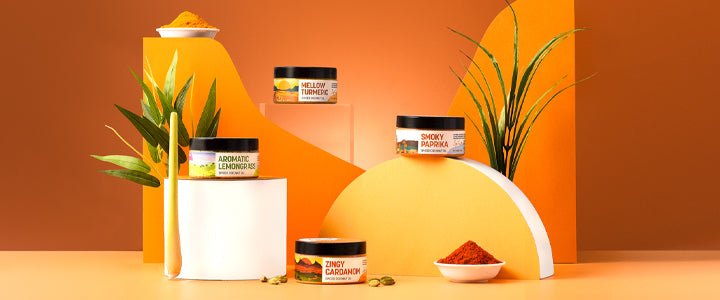Fenugreek

Fenugreek is a common ingredient in curries and other dishes from around the world. It was first brought to Europe by traders more than two thousand years ago, where it has become an essential part of many recipes.
The Fenugreek leaves are often used as a herb, while fenugreek seeds are most commonly found in spice mixes but can also be eaten on their own raw or cooked with rice or vegetables for great flavour!
Fenugreek can be found either whole or ground and is usually green, greyish-green or brown coloured, but its name changes depending on where it's from! Fenugreek has the nickname "Turkey Rhubarbs" because that's what they call them in Egypt; while Greeks know this herb by their own word for hay.
It is often used to help manage diabetes as it helps with blood sugar levels. The plant has been traditionally used for centuries in traditional medicine. It can be applied topically or taken internally to treat stomach ulcers, indigestion, diarrhoea wounds and skin eruptions and may alleviate symptoms of IBS (Irritable Bowel Syndrome) by reducing inflammation within your gut.
The whole Fenugreek plant can either be used medicinally or as spices for food preparation.
The leaves can be eaten as a vegetable and contain compounds that have been shown to inhibit the growth of cancer cells.
Fenugreek seed contains various compounds, including saponins - mucilage, phytosterols, flavones and phenolic acids such as chlorogenic acid, caffeic acid and ferulic acid. The seeds are also rich in proteins (46%), carbohydrates (31%) and fatty oils (9%). [1] .
It is an annual herb, reaching 1.3 to 1.8 meters at full maturity and has yellow flowers that bloom from May through July. Fenugreek grows best in hot, semi-arid climates near the Mediterranean and Southern Europe. Best suited to sandy soil with ample sunlight in tropical climates but has also grown successfully as far north as England and Canada.
The herb is aromatic and has a smell like maple syrup. It is a member of the genus Trigonella, which includes other similar herbs, including chickpeas (garbanzo beans) and sprouts. Fenugreek leaves resemble those of clover, while the seeds look like yellow raisins.
The Egyptians used Fenugreek for embalming their dead.
It supposedly helps with weight loss if drunk as tea.
Fenugreek is one of the spices used in the Pepper Spiced Coconut Cooking Oil which is the oil used in several of the Zing Foods Spiced Coconut Oil recipes such as the BBQ Halloumi with Berbere Spiced Oil, Ethiopian Honey & Lemon - A great vegetarian recipe or for an easy Vegan recipe swap Tofu for Halloumi. There are many healthy, easy and delicious recipes that can be made with The Spiced Oils, which are naturally gluten-free, dairy-free and vegan-friendly certified.
To check out more details about Fenugreek and its health benefits
Fenugreek: An Herb with Impressive Health Benefits
Please always check with your doctor if you have any health concerns.




Comments